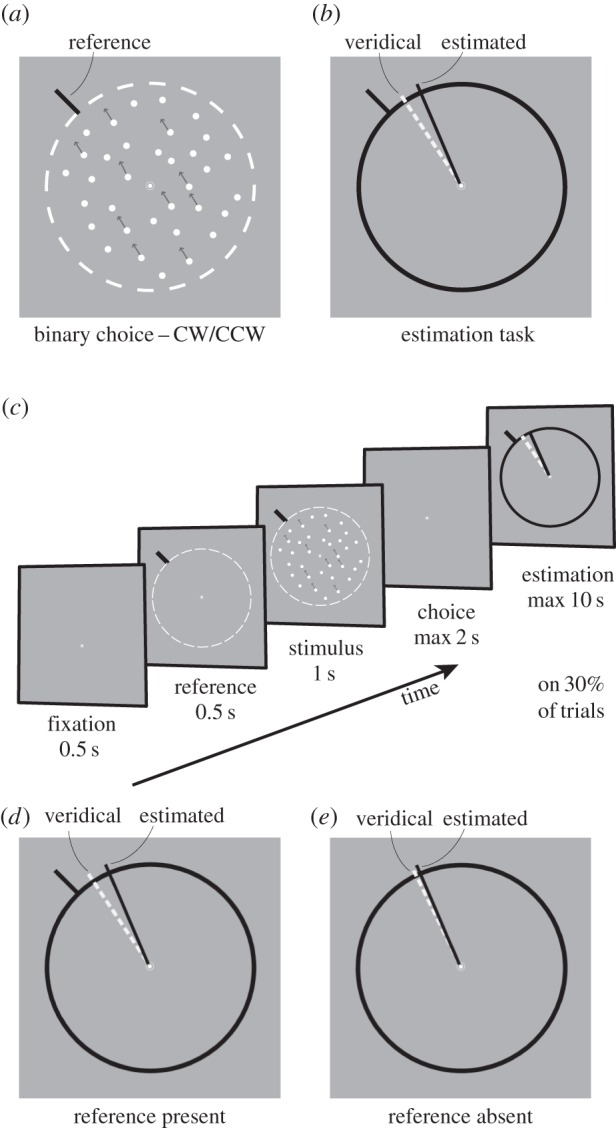Figure 1.

Stimuli and task. (a) Subjects were presented with a random-dot-kinematogram (RDK) in a circular aperture (dashed line for illustration purpose only). They had to indicate whether the stimulus direction was more CW or CCW than a reference line in a two-alternative-forced-choice task. (b) On a proportion of trials (30%), subjects also reproduced the perceived direction of motion in an adjustment task by extending a line (shown in black) from the fixation point towards a circle delineating the stimulus aperture. For each trial, we recorded the estimated and veridical directions of motion (illustrated by dashed line). (c) Timing of stimuli. A reference (orientation randomly chosen for each trial) was presented for 0.5 s. The RDK stimulus was shown for 1 s (coherence either 4%, 7%, 13% or 25%; direction ±24.5° from the reference). Signal dots moved with a speed of 4° s−1. Noise dots were replotted at random locations within the stimulus aperture on every other screen refresh. After another 0.5 s delay, subjects reported whether the stimulus direction was more clockwise or counterclockwise than the reference, followed by feedback. In a subset of trials, no feedback was given, and subjects performed the estimation task instead. (d,e) Importantly, subjects performed the estimation task either (d) in the presence or (e) in the absence of the reference line.
